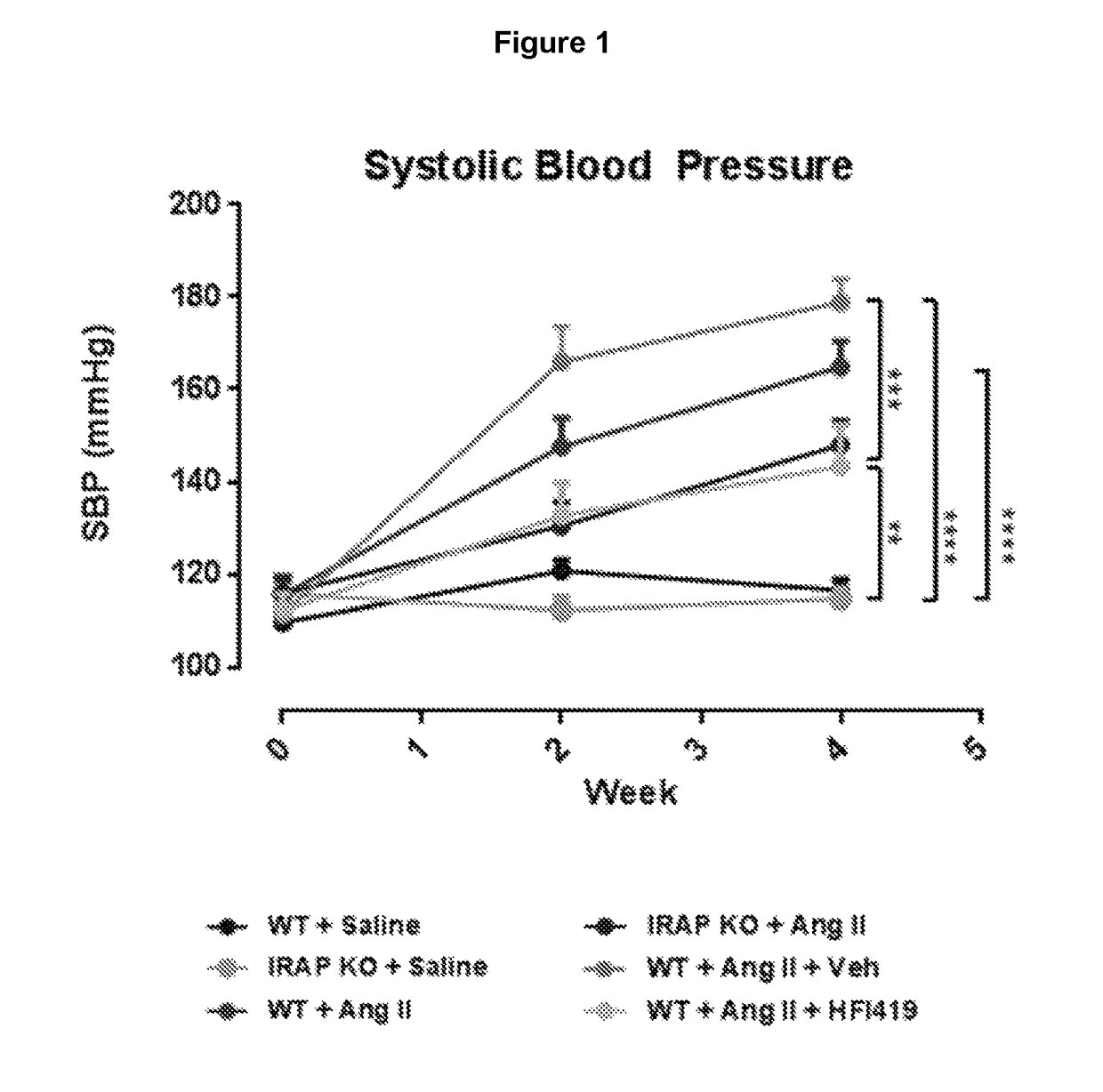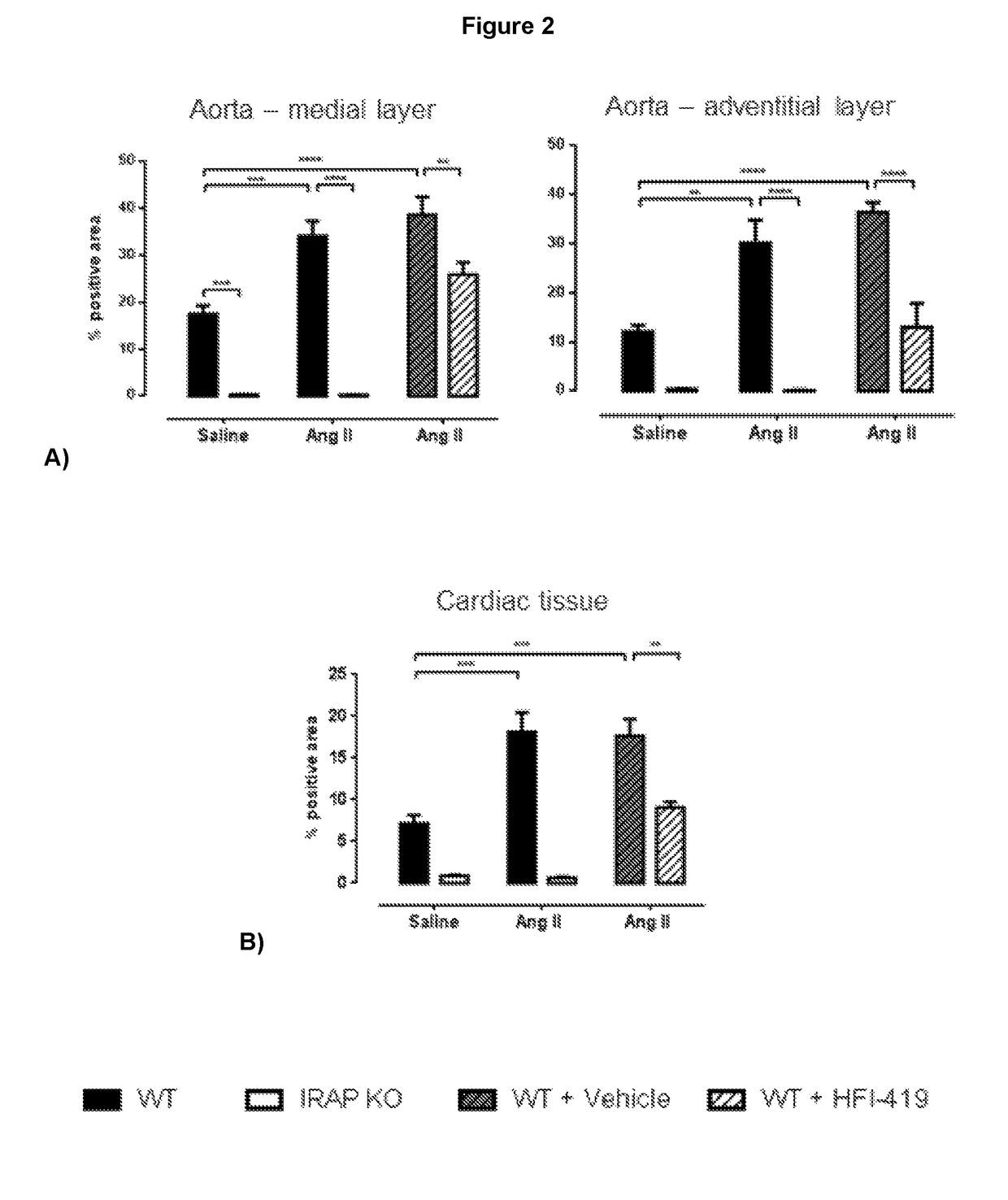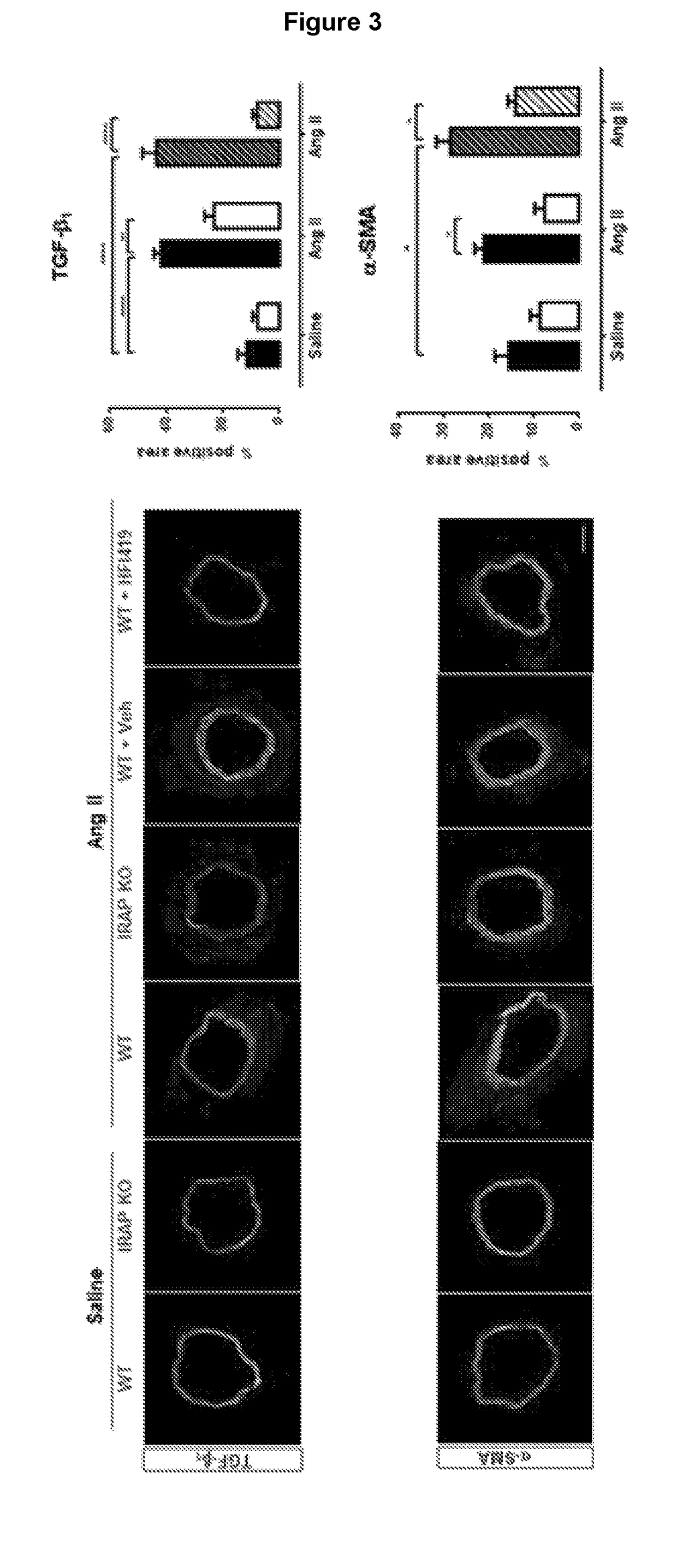Fibrotic treatment
a fibrosis and fibrosis technology, applied in the field of fibrosis treatment, can solve the problems of affecting the blood supply to the heart, affecting the normal functioning of the heart, and permanent scarring or cardiac fibrosis, so as to improve the collagen volume fraction, improve the collagen deposition, and improve the effect of collagen deposition
- Summary
- Abstract
- Description
- Claims
- Application Information
AI Technical Summary
Benefits of technology
Problems solved by technology
Method used
Image
Examples
example 1
[0373]Studies were performed to examine the IRAP-specific effects in the heart and vasculature of the Angiotensin II-induced mouse model of fibrosis as initial proof-of-principle studies. In the genetic deletion model, male young adult WT and IRAP KO mice, aged between 4-6 months were treated with either Ang II or saline subcutaneously for a period of 4 weeks via osmotic mini pump. Blood pressure was taken fortnightly. In the pharmacological inhibition model, WT mice were treated co-treated subcutaneously with the synthetic IRAP inhibitor, HFI-419, along with Ang II-infusion for 4 weeks. The inhibitor was dissolved in Dimethyl sulfoxide (DMSO) and 2-hydroxypropyl-β-cyclodextrin (HBC) at a ratio of 1:3.
[0374]Ang II infusion was used as a conventional model to ‘stress’ the cardiovascular system as this endogenous hormone contributes to the development and progression of a range of cardiovascular diseases including hypertension, heart failure, renal failure and vascular stiffening whic...
example 2
[0389]Following on from the proof-of-principle studies (Example 1) showing that IRAP deficiency and direct pharmacological inhibition of IRAP were effective in preventing Angiotensin II-mediated cardiac and vascular fibrosis and inflammation, this example now underlines the potential clinical effectiveness of targeting IRAP. This is demonstrated using an aged model of cardiovascular fibrosis in which global IRAP deficient mice are protected against age-induced increases in cardiac fibrosis and inflammation whilst direct IRAP inhibition completely reverses age-induced cardiac remodeling.
[0390]Global IRAP Gene Deletion Protects Against Age-Induced Cardiac Fibrosis
[0391]In the current study, IRAP immunofluorescence was present in both interstitial and perivascular regions of the heart and was doubled in the hearts of aged WT mice when compared to their young genotype controls (FIG. 8a,b). The veracity of this effect was confirmed by the absence of staining in hearts obtained from young...
example 3
[0415]Approximately, 1.7 million Australians and 26 million Americans have chronic kidney disease with reduced kidney function. The final manifestation of chronic kidney disease (CKD) is renal fibrosis characterized by tubulointerstitial fibrosis & glomerulosclerosis.
[0416]The studies in this Example show that removal or inhibition of IRAP activity has dramatic effects on kidney fibrosis and have identified IRAP as a novel target in CKD.
[0417]Regulation of IRAP Expression and Fibrosis in the Kidney of Aged Mice
[0418]Similar to Example 2 above regarding cardiac fibrosis, two specific experimental paradigms were used. Hence the inventors compared the kidney phenotype between aged WT and global IRAP knockout mice (aged between 18-22 months) & young WT mice (aged 4-6 months) to determine prevention of age-related kidney fibrosis development. The inventors also compared the treatment of WT aged mice with vehicle or with a small molecule inhibitor of IRAP to determine therapeutic treatmen...
PUM
| Property | Measurement | Unit |
|---|---|---|
| thick | aaaaa | aaaaa |
| emission wavelengths | aaaaa | aaaaa |
| emission wavelengths | aaaaa | aaaaa |
Abstract
Description
Claims
Application Information
 Login to View More
Login to View More - R&D
- Intellectual Property
- Life Sciences
- Materials
- Tech Scout
- Unparalleled Data Quality
- Higher Quality Content
- 60% Fewer Hallucinations
Browse by: Latest US Patents, China's latest patents, Technical Efficacy Thesaurus, Application Domain, Technology Topic, Popular Technical Reports.
© 2025 PatSnap. All rights reserved.Legal|Privacy policy|Modern Slavery Act Transparency Statement|Sitemap|About US| Contact US: help@patsnap.com



